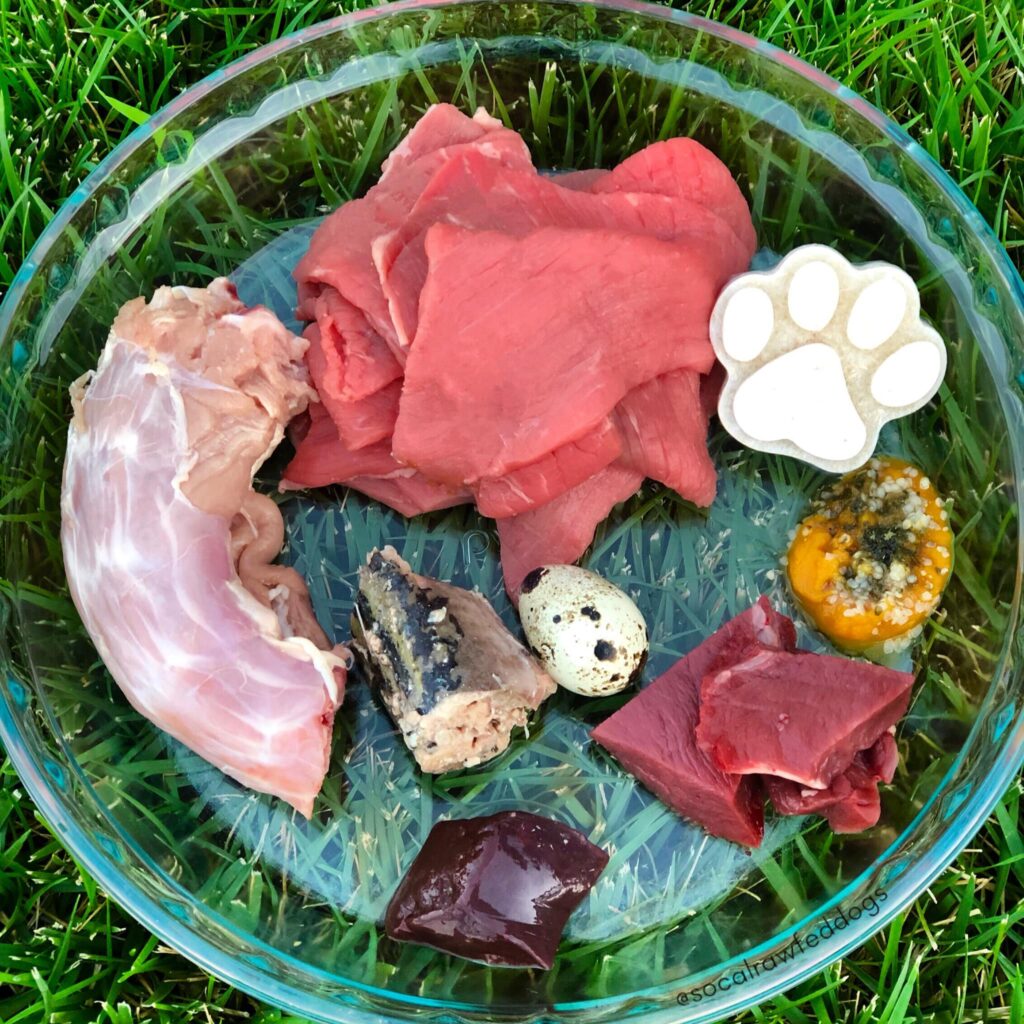Click the Arrow to Access the Table of Contents Links
Feeding Breeding Dogs Prior to Breeding
It’s important to prepare your breeding female, who we will refer to as a “Dam” here forward; for her pregnancy a good 30 days before you intend to mate her. You want to make any diet improvements that may be needed at this time to give her the opportunity to adjust and for you to ensure any changes aren’t disruptive to her. Should your dog be overweight, it would be ideal to reduce her weight over the course of the next weeks through a lower calorie diet and increased physical activity. If the dam is underweight, you’ll be improving her diet over the next month, so this will take care of increasing her weight to the ideal weight for her breed.
Critical Tips to Set your Dam up for Success: Ideally, you want to set the dam up for success by ensuring her physical and internal systems are in optimal condition at the time of breeding. Additionally, genetic health testing should be done via a DNA swab so you can make sure your female is genetically fit for breeding.
Type of Food & Schedule Changes to Make Prior to Breeding
 The first step is to establish how many calories each day your female needs and begin building a diet plan that gets that number of calories into her body.
The first step is to establish how many calories each day your female needs and begin building a diet plan that gets that number of calories into her body.
My calorie calculator for adult dogs that is linked further along in this article will do that math for you. All you need to do is enter your Dam’s specific information and it will provide you with her daily caloric needs for maintenance which is what you use during the pre-breeding phase.
The second part to ensuring her needs are met is by is feeding the right kind of calories that provide all of the daily nutrients she needs. (Don’t worry, I have a calculator for that too!)
Choose nutrient dense foods so that your dam can optimally utilize the nutrition in those foods without you needing to excessively increase the amount she is fed. You don’t want to make food increases currently; you want to make food improvements. The amount of food is increased later in the gestation period (week 5). Unless your female is underweight; then you do need to make an increase in the amount she is fed to bring her up to a more healthful weight.
If you are not already feeding twice per day, now is the time to increase meals from one feeding per day to two. This doesn’t mean to double the food amount; this means you will split the total day’s food into two meals. Prior to breeding, you want to primarily offer animal-based proteins and fats. You’ll want to feed lean meats but the overall contribution of daily calories should be a higher fat % than protein % with a low to moderate carb %.
Critical Tip: While not pertinent to pre-breeding, it has been found that pregnant dogs require dietary carbohydrates for optimal reproductive performance and survivability of pups. The glucose requirement for pregnant dogs factors into this and will be further discussed in articles two and three of this series.
Remember, 30 days prior to breeding is when you want to make these diet improvements if you’re not already feeding this way. Protein, Fats, & Carbs are called Macronutrients. You need to be sure to pay attention that within your feeding regimen you are offering important Micronutrients that include Calcium, Zinc, Choline, as well as the essential omega-3 fats: EPA & DHA to name a few.
You can view the full Recommended Daily Allowances for adult dogs at maintenance via the NRC (National Research Council, Nutrient Requirements of Dogs and Cats).
Critical Tip: When you’re preparing your dam for breeding, provide highly digestible foods with a slightly increased amount of protein than the regular adult maintenance amount. Again, this is not a volume increase, it’s a change in food type if needed.
Calorie Calculator and Nutrient Calculator for Adult Dogs
To determine the number of calories needed as discussed above, all you need to do is enter your female’s information into the calculator and it will calculate her daily needs for the pre-breeding stage. Click here to access the Calorie Calculator for Adult Dogs at Maintenance.
The following link will take you to the NRC nutrients calculator for adult dogs. This calculator will give you the amounts of each required nutrient specific to your Dam based on the information you provide. Nutrient Requirements Calculator for Adult Dogs at Maintenance.
Omega-6 : Omega-3 Balance
If you are not already feeding an optimal balance of omega-6 and omega-3, you should do so now. The relationship between the two is often misunderstood and omega-6 is viewed by many owners as “the bad kind of omega” but that’s not the case. Both types of omegas are needed.
Dr. Cailin R. Heinze, a board-certified veterinary nutritionist at the Cummings School of Veterinary Medicine explained it well when she wrote “The reason for a link between fatty acids and inflammation is that the body uses these fatty acids (both omega-3 and omega-6) to make compounds that are involved with our response to injury and infection. Omega-6s generally are used to make compounds that “stir up” inflammation while omega-3s are more associated with compounds that help resolve it once it has served its purpose. This is the reason that you may have heard omega-6s referred to as promoting inflammation while omega-3s are often considered to be anti-inflammatory.”
Critical Tip: It is best to keep the Omega-6 to Omega-3 ratio at under 5:1. For the pre breeding stage of a healthy female with no known issues, I recommend a ratio of 4:1 down to a 2:1.
Conclusion
During the pre breeding stage you have learned how many calories your dog should be eating, what kind of calories those are, and you have made improvements to your female’s diet by applying what you’ve learned. The key during the pre breeding stage is to get her nutritionally supplied with the proper balance of what she needs to optimally thrive. Using the calorie calculator for adult dogs along with the NRC nutrients calculator for adult dogs as your guide will allow you to make sure you’re feeding foods that fill each part of the “canine food pyramid.” When your female is being fed in that manner then her body is in good condition for pregnancy.
Sources:
Nutrient Requirements of Dogs and Cats, Animal Nutrition Series by the National Research Council (NRC), 2006
Applied Veterinary Clinical Nutrition, 2012 Edition by Andrea J. Fascetti and Sean J. Delaney
Feeding Breeding Dogs Series by Amy Granillo, 2018
Influence of a Low Carbohydrate Diet on Performance of Pregnant and Lactating Dogs., Romsos et al., 1981
Canine and Feline Nutrition A Resource for Companion Animal Professionals, Third Edition by Case, Daristotle, Hayek, Raasch, 2001
